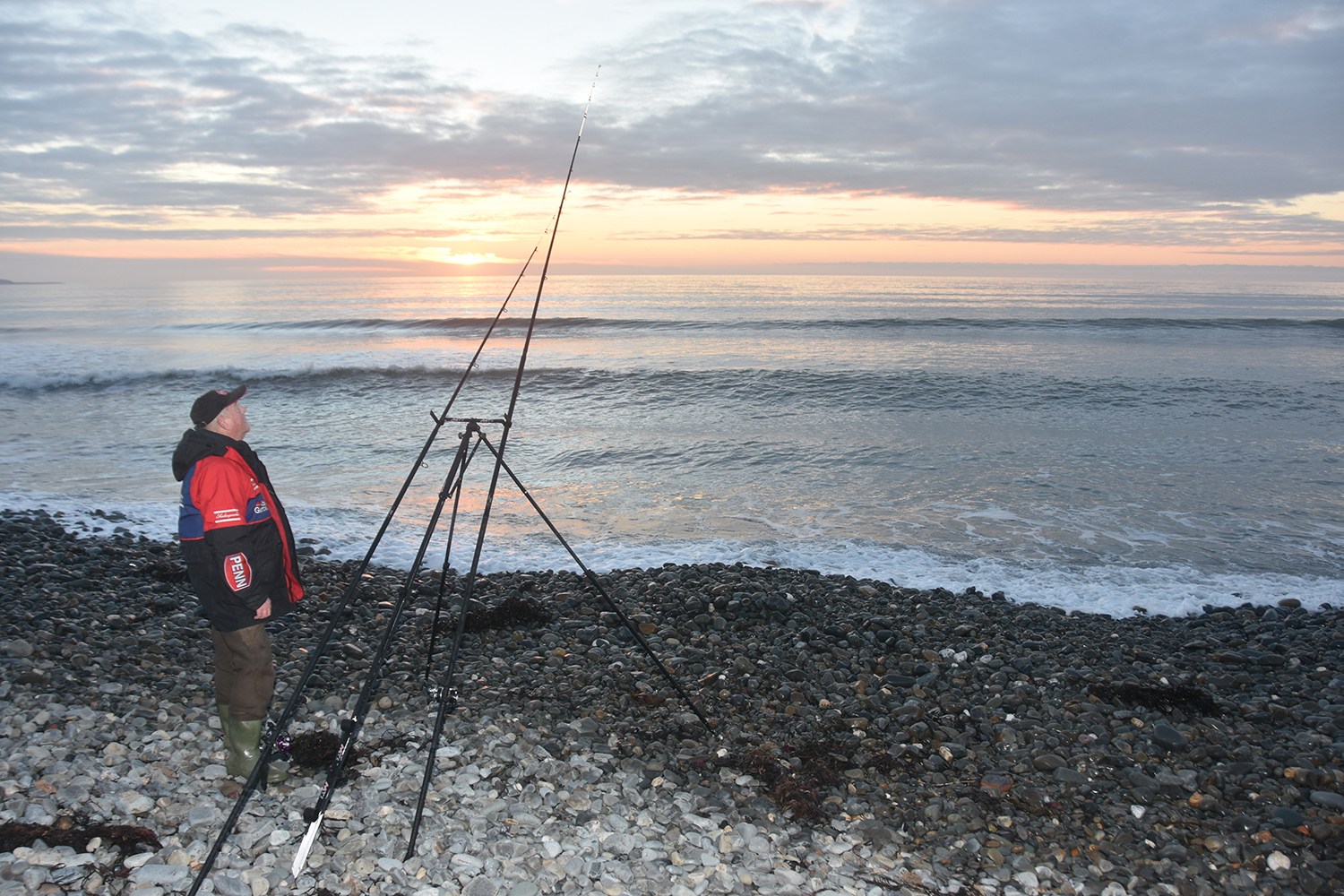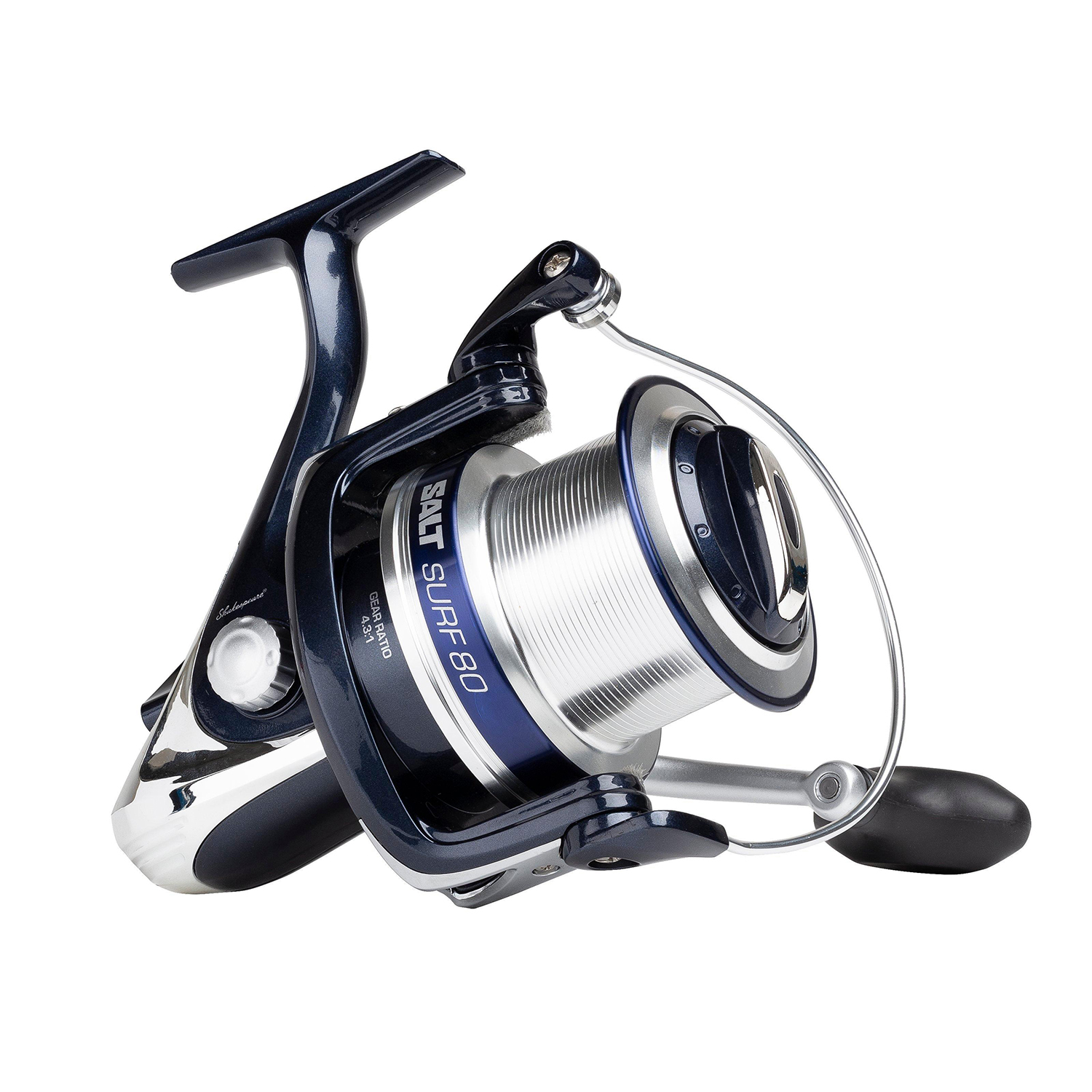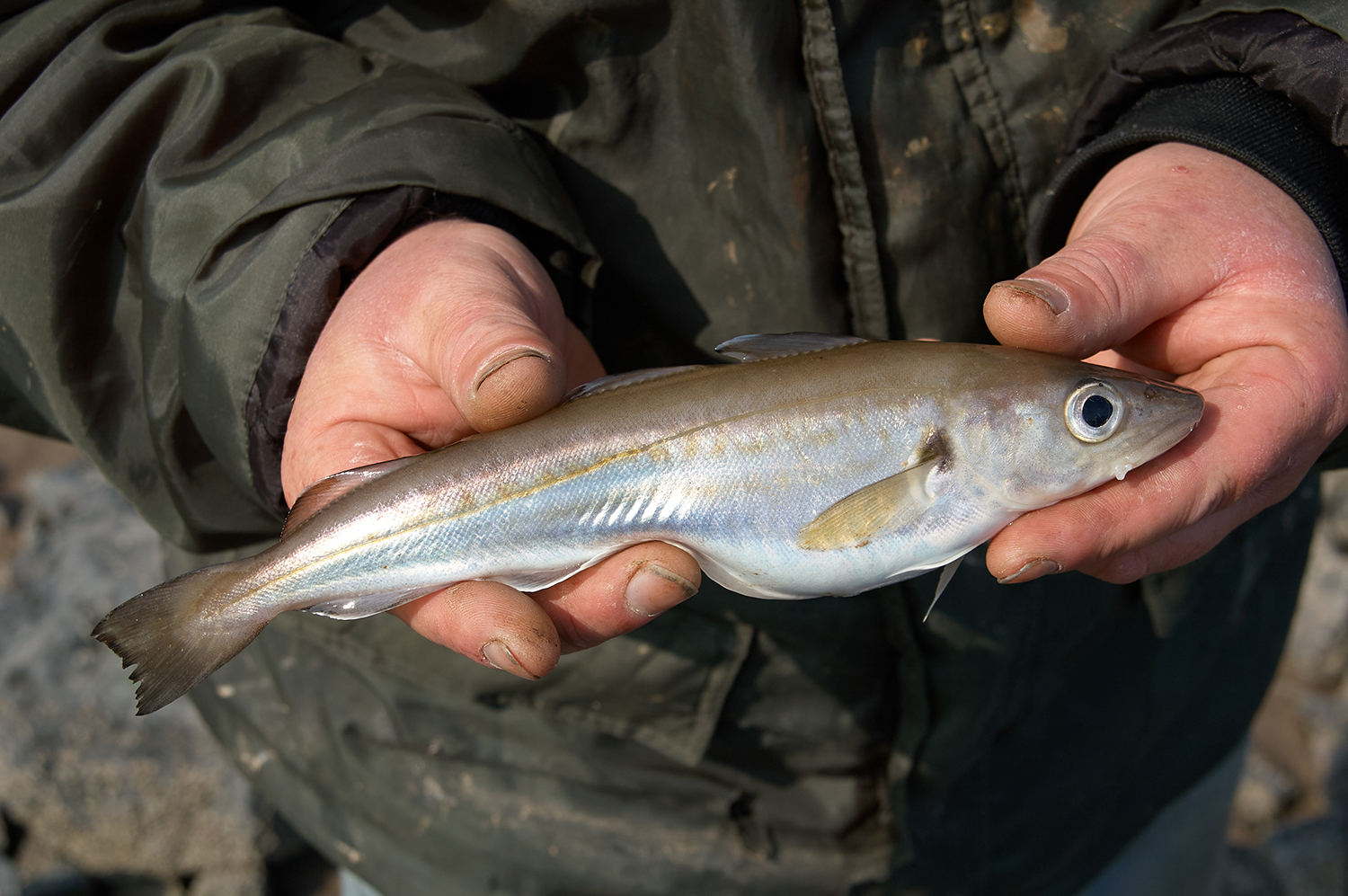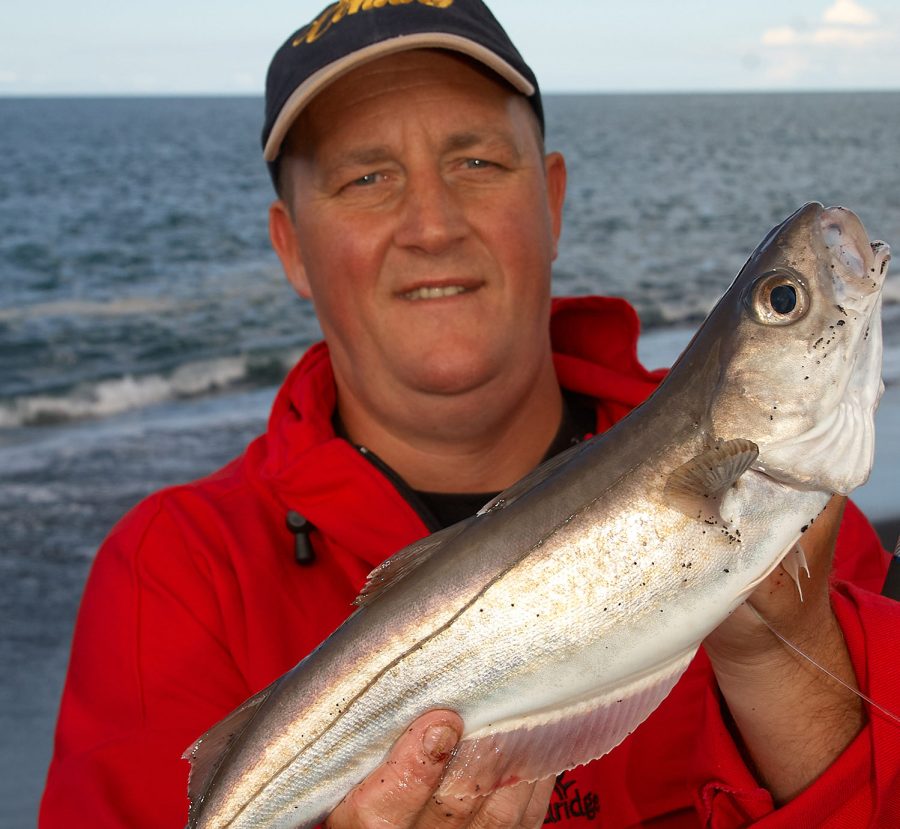SPONSORED CONTENT
Mid-September sees a sudden increase in whiting numbers for the shore angler. Though one of our smaller shore species, a 2lb whiting off the shore being a good one generally, they make up for that in their vast numbers and will dominate catches until the New Year. They are an ideal target species for newcomers to sea fishing, and even more experienced anglers can’t resist a night or two catching eager whiting through the winter.
They are found throughout the whole of the UK and Ireland coastlines and feature from shallow surf and deeper steep-to beaches, piers, breakwaters, jetties, harbour walls and even off the rock ledges providing the ground is fairly clean.
WHEN TO FISH
Although smaller whiting can be caught from the shore throughout the year, the traditional inward migration occurs around mid-September with their numbers increasing throughout October and November, peaking around mid-December, then slowly thinning out again through January and February as they move out into deeper water to spawn.
If you’re fishing inside harbours and off breakwaters and rock ledges into deeper water, the smaller neap tides with less tidal flow can fish very well. Whiting like some tide run, so fishing the middle hours of the flooding tide is the best time with slack water seeing the least bites.
If you concentrate on the beaches, even the deeper beaches, then it’s generally the bigger spring tides that will produce the biggest and most consistent catches. The shoals of whiting stay just offshore, but as soon as the tide starts to increase in flow about an hour or so after low water, the whiting begin their inward push onto the beaches. Again, it’s the middle hours of the flooding tide that prove best with slack water normally producing little. You’ll need to make longer casts, but the fish will stay in range on the ebbing tide, that is, unless the beach is very shallow. Then, they’ll move off quickly beyond the mean low water line.

Calm seas are best for whiting
FISHING AT NIGHT
On the deeper water venues, they can be caught in daylight, more so if the water is carrying some colour and the day is overcast. They do not like clear seas and bright sunlight. The best of the fishing in all cases is during the hours of darkness. This especially applies to tides that start to flood and ebb in darkness. This is when the greatest numbers of whiting come in to pack the beaches and when fishing off man-made structures is best.
Whiting are not lovers of rough seas and heavy swells. This is especially so when fishing the shallower venues where the best conditions are calmish seas with either a very light onshore wind or even an offshore wind. They will tolerate rougher seas when in deeper water, but even here, they will push out deeper if the seas turn rough.
BAITS
Being a shoal fish, whiting are not fussy feeders. Their natural food is worms, shrimps and small crabs when younger, but they soon revert to also eating any small live fish. By the time they are a fully grown adult their natural diet is live fish and they also turn cannibal eating their own kind. If you look in their mouth, you’ll see small needle-sharp teeth designed to grab and hold on to prey. Small flatfish and especially sandeel form a fair part of this fish diet.
Both lug and rag baits are effective for general catches, but these softer baits, and shellfish baits like mussel, razorfish and sand clams, tend to target the smaller fish in the shoal. To target the bigger fish, you need to bait with small sections of sandeel body about two-inches long feeding the sandeel over the hook point, down around the bend of the hook, then up the shank and secure it with bait elastic. Sandeel is especially good. Mackerel and herring strips also work really well, as will Bluey. The strips need to be no more than two-inches long and pass the hook point through from the skin side, pull the shank fully through, then bring the hook point back out through the skin side and secure with bait elastic.
Alternatively, using worm but tipping with a small section of sandeel or mackerel will still interest the bigger fish as well as taking the smaller ones.

Shakespeare SALT Surf 423 14ft beachcaster
TACKLE
Rods such as the Shakespeare Salt Surf 362 12ft beachcaster, rated to cast four to six ounces (113-170g) is ideal for general whiting fishing off the beaches and even when fishing off man-made structure such as piers and breakwaters. The ideal reel for this rod is the Shakespeare SaltT Surf 70 loaded with either 30lb braid or 20lb mono line, but add a 60lb braid shockleader to the braid and a 60lb mono leader to the 20lb mono to take the strain of casting heavy weights.
If you’re fishing regularly from man-made structure, you can increase the main reel line to 25lb just to give more lifting power if needed.
If casting distance is important, say on very shallow surf beaches when the whiting are at a much longer range, then the extra length of the 13ft Shakespeare Salt 393 beachcaster or the longer 14ft Salt Surf 423 beachcaster helps generate a faster sinker speed and therefore greater casting distance. These rods are better matched to the bigger Shakespeare Salt Surf 80 fixed-spool reel. Again, load with either 30lb braid or 20lb mono and the 60lb shockleader.

Shakespeare SALT Surf 80 fixed spool reel
RIGS
You’re after a shoaling fish, so to maximise catches off the beaches, fish a three-hook flapper with shorter 12-inch to 15-inch hooklengths made from 20lb fluorocarbon. The fluorocarbon is a more stiff and tougher material than mono is, so it presents the bait well with less chance of tangling, plus its toughness minimises the chances of the whiting’s sharp teeth fraying and weakening the hook length.
Hooks should be size 2 Aberdeens. These will land the biggest whiting that swims but will also take the numbers of smaller fish. The long shank presents the bait well and is easier to extract from the whiting’s mouth prior to release.
If you’re fishing into deeper water and still using a three-hook flapper, remember to release a few feet of line so that the line bows down into the water. This simple adjustment guarantees that all the baits are fishing on the seabed where the whiting are feeding. In deeper water, and when fishing beaches over slack water, lengthen the hook traces to 18 inches as this can make a big difference to the catch rate.
If you use release wired leads, whiting will hook themselves against the weight of the lead. In fact, if you constantly watch the rod tip for bites, you’ll quickly learn to identify first one, then two, then three fish as they individually hook themselves. One hooked whiting will always attract others!

TECHNIQUE
From the beaches, aim to fish two rods. Cast one rod to medium range and the other as far as you can. You’ll normally catch on the long-range rod first, then, when you start to get bites at mid-range, bring the other rod in to the same distance and continue doing this as the tide floods to maintain contact with the fish as they gradually move inshore.
Once you get into mid to late January and the numbers of whiting start to decrease, try swapping over to a plain lead weight and let this trot down tide with the tide pressure on your line. The weight will roll then drop into depressions or gutters along the beach and this is where the fewer in number, but often bigger whiting will be feeding. Another tip for bigger whiting is to fish close in in the surf after New Year as these bigger individual fish run the white-water surf.
If you’re fishing from man-made structure and rock ledges the smaller whiting tend to be further out with the bigger fish tighter into the structure. It’s always worthwhile dropping a short cast in with a fish bait to see if you can pick up one of these bigger fish.
TOP TIP
Adding a 3mm to 4mm luminous green bead on the hook-length above the hook can also increase the catch rate. Whiting are drawn to any green luminescence, which suggests movement and potentially food, and this advertises your bait to them even if they miss your bait’s scent trail.
Try using leads that are coated in luminous green paint. This can be charged with the flash from your phone or headlight to give it a real kick and attract fish from further afield.
For more fishing advice, head to our Tips and Tactics section







